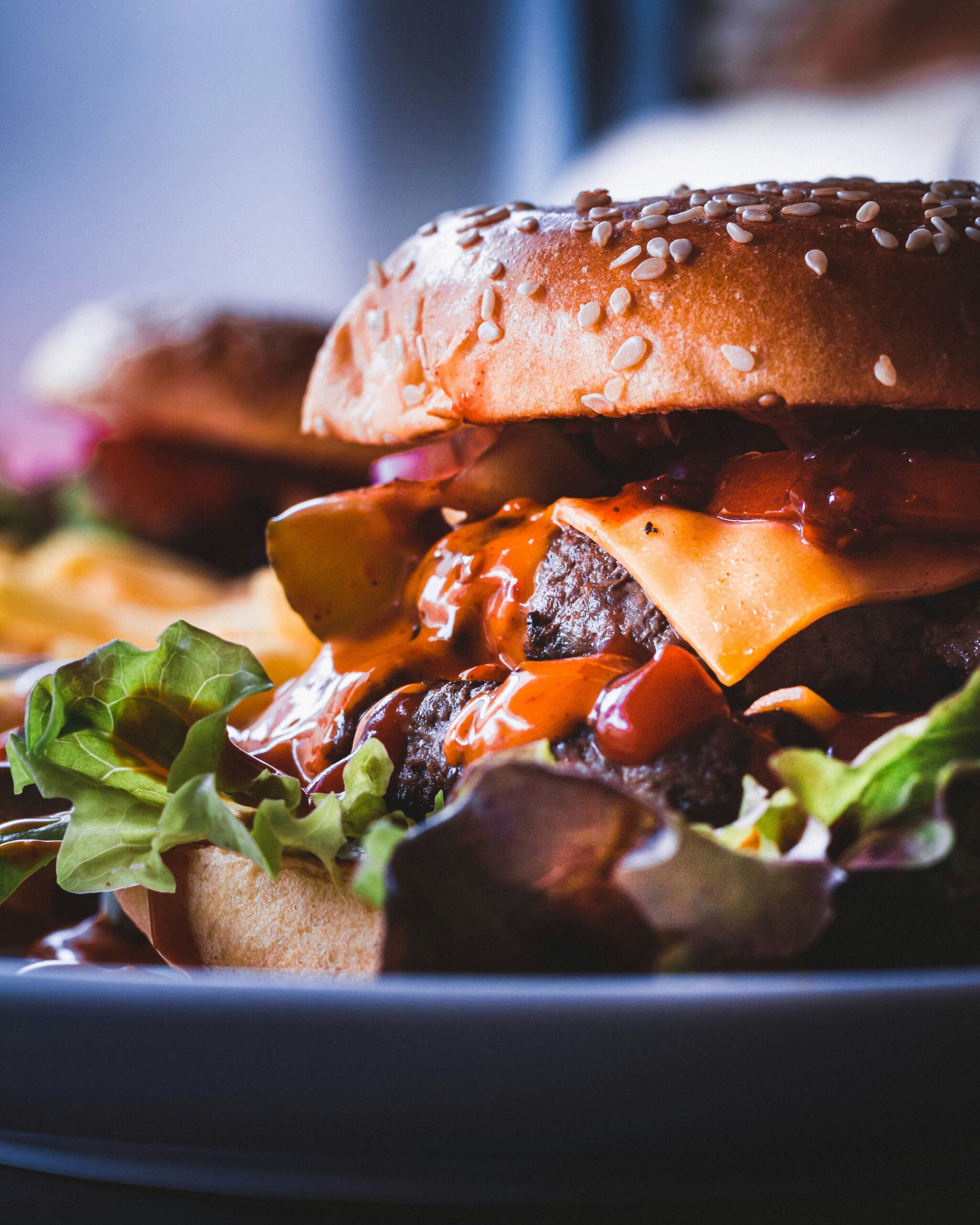Have you ever found yourself reaching for a bowl of creamy mac and cheese or a decadent slice of chocolate cake after a long, exhausting day? You’re not alone. Comfort food, often characterized by high-fat, high-calorie dishes, seems to have a magnetic pull on us, especially when we are stressed, sad, or nostalgic. But why does your body crave these indulgences during moments of discomfort? Let’s take a delicious journey to explore the science and psychology behind your body’s craving for comfort food.
The Definition of Comfort Food
Let’s begin by understanding what comfort food truly means. While the items on this list can vary widely from person to person, one thing remains constant: these foods evoke a sense of warmth and security. For some, it might be a steaming bowl of chicken noodle soup, conjuring memories of mom caring for you during a cold. For others, it might be a hot slice of apple pie, reminiscent of family gatherings.
The common thread in comfort foods is their ability to provide emotional solace. They often have a rich, satisfying taste which can bring about a feeling of well-being. But their effects go beyond mere nostalgia.
The Psychological Comfort
Nostalgia and Emotional Connections
One of the reasons you might reach for comfort food is its strong association with memories. These foods often have connections to fond memories and positive emotions from your past. Whether it’s the smell of freshly baked cookies reminding you of childhood or those lazy Sunday brunches with friends, these foods are tied to feelings of happiness and security.
Eating them during stressful times can act as a form of emotional support. It’s like wrapping yourself in a cozy blanket or getting a reassuring hug. But it’s more than just reminiscence. Eating foods tied to positive emotions can activate the brain’s reward system, releasing dopamine and making you feel good, at least temporarily.
Stress and Emotional Eating
Stress can significantly impact your eating habits. When you’re stressed, your body might release cortisol, a hormone that can increase appetite and cravings for high-fat, sugary foods. This is a natural response, rooted in our body’s desire to quickly access energy and comfort during trying times.
This reaction isn’t just about biology; it’s tied to societal norms too. Over the years, food has evolved into a common coping mechanism for stress. The repetitive cycle of stress-relief through eating may make it habitual to seek solace in comfort food whenever you feel overwhelmed or down.
Conditioned Responses
Have you ever felt rewarded with a sweet treat after a challenging task during childhood? Those instances have created conditioned responses where rewards and positive feelings are linked to eating certain foods. When you indulge in comfort food, your brain taps into these conditioned pathways, seeking satisfaction and relief.
This conditioned response is deeply ingrained and often repeated without conscious thought. Even as adults, you might still associate success or consolation with food, creating a cycle where stress or emotional discomfort is alleviated by consuming comfort foods.

The Biological Basis
The Role of Neurotransmitters
When you consume comfort foods, your body releases the neurotransmitter serotonin, often called the “feel-good” hormone. High-carb, high-sugar foods can enhance serotonin production, briefly lifting your mood. It’s a physiological response that temporarily boosts happiness and relaxation.
This neurochemical interaction explains why, after indulging in comfort food, you often feel a quick rush of pleasure and well-being, even if followed by regret. It’s your body’s way of accessing immediate physical comfort during distress, albeit temporarily.
The Brain Reward System
Comfort food cravings are intricately linked to your brain’s reward system. This system uses neurotransmitters like endorphins and dopamine to create feelings of pleasure and satisfaction. Comfort foods, loaded with sugar and fat, can stimulate these neurotransmitters, offering a short-term emotional lift.
When you eat comfort food, the pleasure centers in your brain activate, creating a rewarding sensation. It’s like your brain sends a message saying, “This tastes and feels so good, let’s do it again!”
Hormones and Hunger
The hormones ghrelin and leptin play essential roles in your hunger and craving patterns. Ghrelin, known as the hunger hormone, can drive the need to eat when you feel stressed or upset. On the other side, leptin helps regulate hunger by signaling fullness to your brain. Yet stress can impact leptin sensitivity, making it harder for you to feel satisfied.
During difficult times, your body might produce more ghrelin and less leptin, increasing hunger and cravings for comforting food. It’s a biological attempt to seek energy sources and emotional regulation through eating.
Comfort Foods Around the World
Regional Variations
While mac and cheese might top the comfort food list in the United States, fish curry might hold that title in parts of India. Comfort foods usually encompass what is readily available and culturally significant. They reflect regional flavors, cooking styles, and the ingredients specific to those areas.
For instance, ramen in Japan or poutine in Canada showcase ingredients and flavors central to their respective cultures. The diverse comfort food offerings around the world demonstrate the universal need for food that brings emotional satisfaction.
Table of Global Comfort Foods
| Country | Comfort Food |
|---|---|
| USA | Mac and Cheese |
| Italy | Pasta alla Carbonara |
| India | Fish Curry |
| Japan | Ramen |
| Canada | Poutine |
| Mexico | Tamales |
Why Cultural Context Matters
The cultural context of comfort food can influence not just what you eat, but how you eat it, and whom you share it with. In many cultures, food is a communal activity, elevating the emotional comfort from not only the taste but the shared experience.
These culturally rooted foods can offer a sense of belonging and identity, which further strengthens their role as comfort foods. They act as tokens of cultural sustenance, nurturing ties to your heritage and traditions.

Psychological and Physical Effects
The Short-term vs. Long-term Impact
Indulging in comfort food offers an immediate sense of pleasure and a quick relief from stress and anxiety. However, the long-term effects might not be as satisfying. Heavy reliance on comfort food could lead to weight gain, dietary imbalances, and even guilt or heightened stress, negating the initial period of relief.
The trick lies in maintaining a balance, enjoying comfort foods in moderation while staying mindful of your overall health and nutritional needs.
Emotional Satisfaction vs. Health Concerns
The pleasure derived from comfort food often stands in contrast to health considerations. While occasionally treating yourself to these foods can be a delightful experience, constant indulgence may lead to physical health issues.
Awareness and moderation are key. Tuning into your body’s needs versus wants can help balance emotional satisfaction with physical well-being.
Strategies to Manage Cravings
Mindful Eating
Practicing mindful eating can reduce the automatic response to reach for comfort food whenever you’re distressed. By paying attention to hunger cues and truly savoring each bite, you can enhance your eating experience while minimizing overindulgence.
Mindful eating encourages self-awareness, helping you discriminate between physical hunger and emotional hunger. It urges you to slow down, appreciate the flavors, and cultivate a healthier relationship with food.
Alternative Stress Relief Activities
Discovering and integrating other stress-relief strategies can lessen your dependency on comfort food. Activities like yoga, meditation, or journaling can channel stress into positive outlets.
Finding balance through new hobbies or regular exercise can provide emotional comfort similar to that of consuming comfort food, with the added benefit of improving physical health.
Balanced Dietary Habits
Maintaining a balanced diet can naturally decrease the frequency of comfort food cravings. Incorporating a variety of nutrients into your meals ensures your body receives the essentials, reducing the need to seek energy surreptitiously through high-calorie comfort foods.
Strive for a diet rich in vegetables, lean proteins, and whole grains, which can help stabilize mood and energy levels, diminishing the allure of comfort foods during emotional lows.

Why Understand Your Cravings?
The Path to Emotional Awareness
Understanding your cravings can pave the way to greater emotional awareness. Recognizing why you turn to comfort food allows you to address the root causes of your emotional distress instead of merely masking them through eating.
Better Decision Making
Armed with a clearer understanding of the reasons behind your cravings, you’re better positioned to make informed choices. You can choose when to indulge thoughtfully and when to opt for healthier coping mechanisms, ensuring a balanced approach to your physical and psychological well-being.
The Conclusion: A New Perspective on Comfort Food
Craving comfort food is an intricate tapestry woven from emotional, psychological, and biological threads. It’s normal and human to seek solace in familiar flavors and textures when distressed. But as with any indulgence, moderation is key. Balancing your cravings with mindfulness and awareness encourages a healthier relationship with food and ultimately, with yourself.
So next time you find yourself craving comfort food, take a moment to understand the intention behind it. Is it hunger or emotion driving your desire? With each mouthful, relish the weight of each flavor, the warmth of nostalgia, and the genuine comfort it brings, all while weaving a mindful tapestry of balance in your life.

